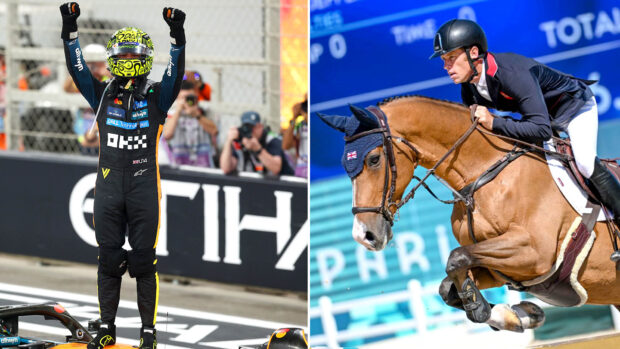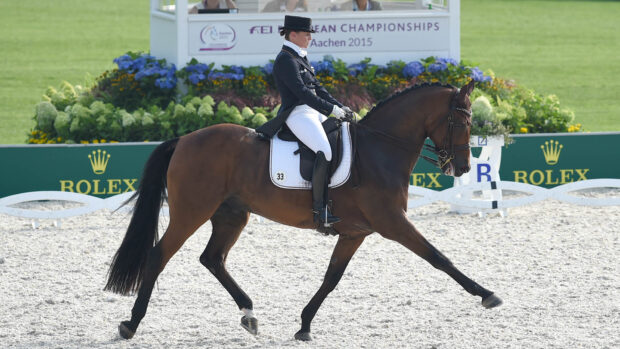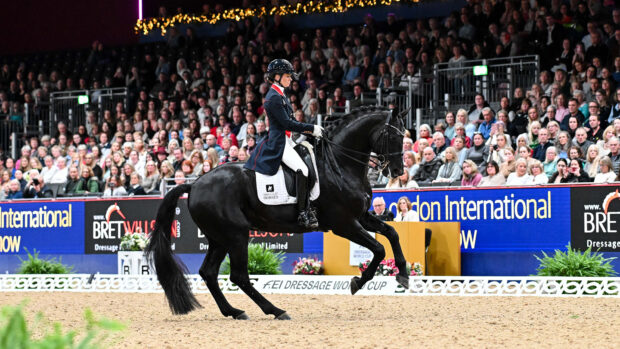When Angela Rogers was experiencing problems with her forward-going Welsh Section D, Jasper, HORSE magazine came to the rescue and arranged for her to have a lesson with top dressage rider and trainer Peter Storr.
In this extract from an article from the May issue of HORSE (on sale 12 April), Peter offers 10 tips for curbing Jasper’s enthusiasm and getting more out of his paces.
Jasper is running away with Angela soshe should work him on a 20m circle to help control his balance and maintain his attention.
Getting Jasper to work in a rounded outline in walk will help Angela keep control when they move up through the paces. She should be animated in the way she asks him to come round and not be afraid to use a little feel on the reins. Allow when he responds.
Angela must make sure she’s sitting straight with an even contact on both reins. She should be encouraging and allow her hands to show Jasper where she wants his head to be. With a horse like Jasper, it’s important he works in a lower outline to help him relax, whereas the more hollow he is the more fizzy he’s likely to become.
With a hot horse you have to ride with your legs on and around him. Because Jasper’s so forward going, Angela was sitting still when she should be using her legs to push Jasper in to a contact.
With a horse which tends to run away from his rider, it’s important to set and stick to a rhythm whichthe rider dictates rather than the horse.
If your horse runs off when you ask for a canter transition, don’t ask for canter until the trot is really established and he’s working in to a rounded outline. Keep your legs cuddled on and your handsdown and wide and then ask again.”
Don’t work Jasper in canter for too long. It’s better he learns what is required of him and if he does something well, finish rather than risk it going wrong again. Start the canter on his good rein until youfeel you’re effective on him then try the other rein.
This horse has got a big canter – a typical cob canter – and the best way to deal with it is to ride it forwards. It’s tempting to pull but this will only make him stronger. Use your legs and seat to balance him and you’ll find him much easier to control.
A forward-going horse is more likely to maintain his concentration in an enclosed space so try and school indoors or in an outdoor manŠge rather than on grass.
Boost a young horse’s confidence by riding him on a good surface until he’s learned to balance himself and take more weight behind. Young horses remember nasty experiences where they may have slipped on a corner or lost their footing and it can make them nervous and tense.
For more on Angela and Jasper’s lesson with Peter, see the May issue of HORSE magazine.
Peter Storr also offers advice with a problem which is the opposite to Angela’s – Penny Powell issues a plea for help to get her Irish Draught X Thoroughbred mare Phedra going forwards.


